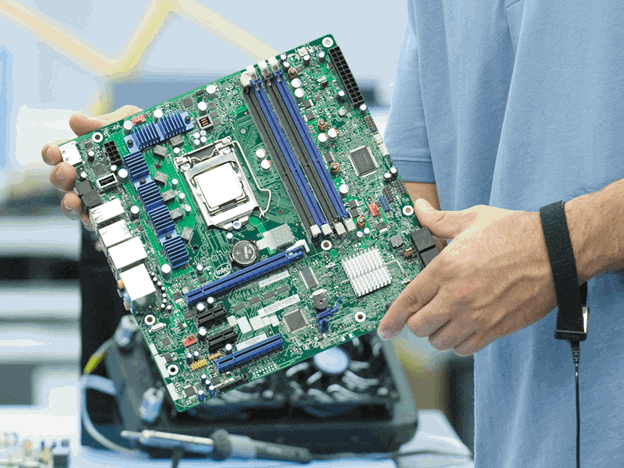Sponsored by Intel
SPONSORED BY Intel - Intel Inside, Including the Motherboard?
Quality Assurance and Validation
In the world of product reliability, “working” is only a beginning. Intel devotes untold millions of dollars to making sure that its motherboards pass not only industry standard quality specifications but also its own internal metrics. For example, as you might have seen in Tom’s Hardware’s February 2009 pictorial on Intel’s Hawthorn Farm facilities, Intel makes sure that its desktop platforms come in under even the FCC’s RF noise emission specifications by at least 4 dB.
Intel is assiduous about ensuring that its motherboards thrive under all feasible conditions. For environmental testing, Intel uses oversized thermal chambers able to test from -73 to +177 degrees Celsius and 20% to 95% humidity. Specially sealed acoustic test rooms allow Intel to measure if platforms are emitting any noise. (If you’ve ever heard “singing” capacitors, you know how annoying this can be.) The company also performs extensive shock and vibe tests that emulate system drops and extended road travel. Intel’s Bigbee notes that most competing motherboard vendors do not perform shock and vibe testing at all, and those that do typically perform only a 20 or 30 G shock test. Intel tests for 50 G. Is there a difference? Maybe. When you drop into a chair, that’s about 10 Gs of impact. Hitting the ground straight-legged from a three-foot drop is about 100 Gs. (No, don’t try it.) Somewhere between those two impact levels, things break. Said differently, the difference between 20 G and 50 G may be the difference between replacing a motherboard after two years and replacing it on a schedule of the owner’s choosing.
An increasingly important area for business buyers is energy efficiency. Intel gets a lot of attention for improving processor performance without increasing energy consumption, but far fewer people get to notice the strides Intel has made in delivering similar efficiencies with its motherboards. Some of this has to do with selecting higher quality components, but much of it depends on thousands of man-hours spent on design, testing, and analysis. Intel isn’t afraid to buck the more-is-always-better messaging common in the industry. When it comes to efficiency, less is often better if implemented properly.
“You might see our competitors advertise a 24-phase voltage regulator with the ability to shut off phases for power efficiency,” says Intel’s Bigbee. “In comparison, I think our highest performance board has eight phases. Our boards are designed to be energy efficient and more balanced, so all the phases get an equal load. When you’re in idle mode, our boards automatically phase shed, which means shutting off phases because you don’t need that much power. We’ve always paid the extra money for solid state caps, more efficient voltage regulators, and phase shedding to give you better efficiency. Unfortunately, we don’t always advertise these things. But if you look at the reviews, including from Tom’s Hardware, typically our boards are the most efficient models tested.”
All of this work allows Intel motherboards to gather the quality and process certifications increasingly demanded by businesses and public organizations. In terms of compatibility, this can result in certifications such as Microsoft’s Windows Hardware Quality Labs (WHQL) approval. In the U.S., Intel’s energy controls are a vital part of enabling a system to obtain ENERGY STAR certification. In Europe, the same is true for certifications such as WEEE and RoHS. (In fact, Intel was a pioneer in the motherboard world for migrating to lead-free design even before RoHS took effect.) As compliance mandates and social concerns push businesses toward greener operations, Intel often finds itself counseling its customers on how to achieve more eco-efficient computing. By no small coincidence, this advice often yields noticeable total cost savings over the long term. Even for a small business of, say, 25 people, having systems that are running 24x7 consume 50% less energy can result in surprising cost savings.
Current page: Quality Assurance and Validation
Prev Page Key Business Features Next Page Industrial/Embedded SolutionsGet Tom's Hardware's best news and in-depth reviews, straight to your inbox.
Tom's Hardware is the leading destination for hardcore computer enthusiasts. We cover everything from processors to 3D printers, single-board computers, SSDs and high-end gaming rigs, empowering readers to make the most of the tech they love, keep up on the latest developments and buy the right gear. Our staff has more than 100 years of combined experience covering news, solving tech problems and reviewing components and systems.
-
Benihana I happen to be a grade-A idiot and now want to buy an Intel motherboard because this article presents data so well. Who else wants some free money?Reply -
trauquen someone said intel motherboard now is not designed by self, they are ODM products, not OEM products. is that truth?Reply -
Lutfij seriously, i'm beggingin to doubt my 2+ years membership at Tom's cos of this so called "article"Reply
I thought Tom's was engaged in bringing us groundbreaking reviews - not things to read when we need to go to sleep.
Face it intel - manufacturers are able to reverse engineer your boards and come out with tonnes of goodies with a slight bump in prices! Period! -
Lutfij Reply9515571 said:What kind of dumbass falls for these bullshit advertorials?
people who aren't enlisted on pc/tech forums and swindlers :P with this rubbish report even intel can fool its CEO into buying their crap :D -
CoolnQuiet Ahem, Mini-ITX was developed by VIA in 2002. Not by Intel! Who writes this nonsense?Reply -
My first and last intel board was purchased with my i3 core (gen1). Pure garbage after 6 months. Slow POSTs became non boots unless I started the machine and hit the reset button. Stick it sideways intel.Reply
-
Well, it's good that it says SPONSORED on the first page, as this could just as well have been written by Intel...Reply

